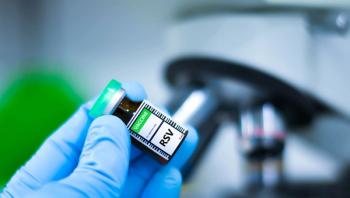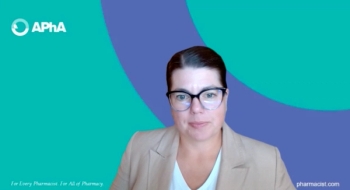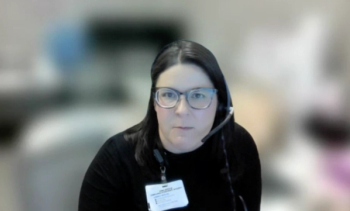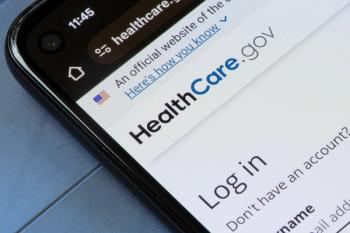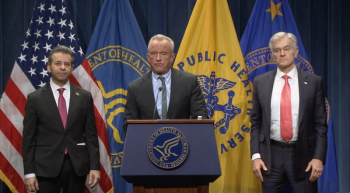
Specialty Pharmacists at the Forefront: Elevating Care for Rare Diseases
In the US, a disease is considered rare when it affects fewer than 200,000 persons, or 1 in every 1500 individuals, with an estimated total of 25 to 30 million Americans overall living with a rare disease at any given time.
The important role of the specialty pharmacist and the need to deliver high-quality and high-touch care in the highly specialized rare disease space for these unique patients was put on full display during the session, “Leaders in Care: Making a Difference in the Lives of Patients With Rare Diseases,”
Joining moderator Shawn Griffin, MD, president and CEO of URAC, the health care and accreditation entity, were Jennifer Carter, PharmD, BCPS, system director of specialty pharmacy at Medical University of South Carolina (MUSC); Richard Faris, PhD, RPh, COO of PANTHERx Rare Pharmacy; and Josh Weber, PharmD, MBA-HCM, CSP, BCMTMS, director of specialty and home delivery pharmacy services at UVA Health.
“It’s about bringing best practices and high-quality standards to your organization and helping you perform at a higher level,” Griffin emphasized. “We do it because we recognize that the work that you do in your communities is key to the health of your communities.”
The panel speakers and their organizations have all gone through and received URAC’s rare disease designation and certification, and they shared their stories on why they pursued this accreditation and their predictions for the future of this unique disease space.
“Really, when it comes to rare disease, we really want to focus on the patient and the patient journey—because these are patients who are generally dealing with a unique disease and have unique needs,” Griffin stated, “and how organizations address those as part of care. It’s about meeting patients where they are.”
Carter told her story first. MUSC received its rare disease certification in fall 2023, and chose to pursue this “to really elevate our practice to the next level,” she explained. The current rare disease that MUSC focuses on is
Moving forward, since the certification is fairly new, she stated that over the next 3 to 5 years, MUSC will continue to build out its rare disease program’s foundation and lay the groundwork for strategy on how it will continue to care for patients with rare diseases.
“The rare patients will always be there,” she said. “And I think it's really important for organizations to have a plan for how they're going to manage these patients above and beyond, especially pharmacy accreditation.”
Faris was next. PANTHERx started as a specialty pharmacy in 2011, with the goal to bring back high-touch patient care and white-glove service following what it viewed as commoditization of difference therapies. This level of care is very intentional, he said, about wanting to know the person first and then understanding how the disease affects them; it is not one size fits all. What spurred the move into the rare disease space was being awarded exclusive drug distribution rights in 2015—he didn’t specify the drug—and in 2016, the specialty pharmacy began to work with manufacturers for which it was the exclusive distributor or for which it distributed a “highly limited distribution drug,” he noted, meaning 4 or fewer pharmacies. By October 1, PANTHERx will only be dispensing drugs via these 2 pathways.
“We really want to provide that higher level of services and we really believe there's differentiation in doing that,” he explained,” as well as when you get to rare diseases, we have some very small patient populations.” These patients need this high level of care the most, he reiterated, and they need it consistently from people who are going to work to remove barriers to care.
Weber explained, like Carter and Faris, that the patients with rare diseases and their unmet needs are what led UVA Health to enter the rare disease space, as well as wanting to meet these patients where they are and give them hope. These patients, he continued, can be misdiagnosed for years, which means they also are not getting the right therapies. Their needs are complex and they need someone to advocate for them and help them to navigate in the space. Currently in the neurology and inflammatory spaces, with 10 rare disease products, UVA Health hopes to scale up its rare disease offerings.
To accomplish that, important questions to ask include how to better partner with the pharmaceutical industry and payers, what are the best ways to align on patient support measures such as gathering and sharing data, and how can we best inspire hope.
“There’s a lot of synergies that we’re all doing,” Weber said, “but it’s important to ask, ‘How do we strengthen that?,’ to get aligned on how we support these patients.”
When asked what advice they would give to organizations considering entering the rare disease care space, everyone agreed that top priorities should be having a good foundation for programming that you can scale and build out no matter what disease state you began with, getting outside of your typical clinical box and being innovative, and really listening to your patients and understanding their journey and incorporating them into how you build out your program.
References
1. Griffin S, Carter J, Faris R, Weber J. Leaders in care: making a difference in the lives of patients with rare diseases. Presented at: AXS24; April 28-May 2, 2024; Las Vegas, NV.
2. Rare disease. National Cancer Institute. Accessed May 1, 2024.
3. Scharping N. What makes a disease ‘rare’? CSL. January 7, 2022. Accessed May 1, 2024.
4. What is URAC accreditation? URAC. Accessed May 1, 2024.
5. Amyloidosis. Johns Hopkins Medicine. Accessed May 1, 2024.
Newsletter
Stay ahead of policy, cost, and value—subscribe to AJMC for expert insights at the intersection of clinical care and health economics.

